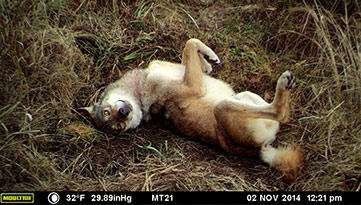Thirty years after the meltdown of the Chernobyl Nuclear Power Plant in Ukraine, humans remain relatively scarce near the accident site.
 Wildlife, however, is thriving, according to a recent study by scientists at the University of Georgia. The researchers set up cameras at 94 sites in the Chernobyl Exclusion Zone—a 1,000-square-mile area where radiation levels remain high—and applied a fatty acid scent to attract animals. In total, they saw 14 mammal species in the footage, most frequently gray wolves, boars, red fox, and raccoon dogs. Since carnivores tend to accumulate radiation faster that animals further down the food chain, finding so many of them was good news. “We didn’t find any evidence to support the idea that populations are suppressed in highly contaminated areas,” said James Beasley, an ecologist at the University of Georgia who helped lead the study.
Wildlife, however, is thriving, according to a recent study by scientists at the University of Georgia. The researchers set up cameras at 94 sites in the Chernobyl Exclusion Zone—a 1,000-square-mile area where radiation levels remain high—and applied a fatty acid scent to attract animals. In total, they saw 14 mammal species in the footage, most frequently gray wolves, boars, red fox, and raccoon dogs. Since carnivores tend to accumulate radiation faster that animals further down the food chain, finding so many of them was good news. “We didn’t find any evidence to support the idea that populations are suppressed in highly contaminated areas,” said James Beasley, an ecologist at the University of Georgia who helped lead the study.

Jim Beasley/Sarah Webster
A gray wolf is caught on camera near Chernobyl.